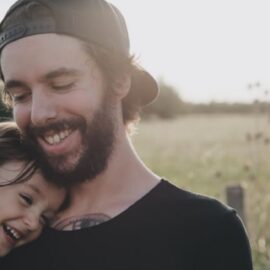

This article is an excerpt from the Shortform book guide to "Braving the Wilderness" by Brené Brown. Shortform has the world's best summaries and analyses of books you should be reading.
Like this article? Sign up for a free trial here.
What are the dangers of conformity? How do people bond through hate and dehumanization?
Brené Brown claims that we tend to strive for belonging by trying to fit in. However, by doing so, we find ourselves more isolated and afraid to express ourselves authentically.
Find out how this process unfolds and the risks that come with trying to conform.
Ways We Try (and Fail) to Belong
In our attempt to feel socially connected (and therefore feel like we belong), we group ourselves by ideology, race, politics, and more. We try to bolster our connection to these groups, but our strategies for doing so—like using dehumanizing language toward outsiders—fuel divisiveness, causing us to forget the humanity of anyone who’s not “one of us.” According to Brown, this lack of a shared sense of humanity, a lack of compassion, and the fear of becoming an outsider are the primary reasons people struggle to achieve true belonging and exemplify the dangers of conformity.
| The Upside of Tribalism Although Brown suggests that the tendency to group ourselves inhibits authenticity and connection, others focus on the positive results of this behavior. For example, in The Righteous Mind, Jonathan Haidt highlights the moral good that can result from our groupish tendencies. He says that when you feel a sense of loyalty and kinship to a group (like a family, organization, or nation), you’re also motivated to cooperate. Your desire to help the group pulls you out of your self-interested individualism and, for many, provides a higher purpose. For instance, if you feel loyal to your company, you’re more likely to cooperate with your colleagues to advance its goals as opposed to sabotaging your peers to advance your individual career. Loyalty to the company may also make your work feel more meaningful because you’re invested in the group’s success. This suggests that if you avoid unhealthy ways of proving your membership in a group—such as dehumanizing outsiders—your connection to a group can be a force for good that doesn’t necessarily oppose true belonging. |
In the rest of this article, we’ll explain the two ways people try to fit in with a group and how these strategies lead us away from true belonging. These include: 1) self-monitoring to an unhealthy extent and policing the opinions of others within a group and 2) trying to connect with people through shared hate.
1. Self-Monitoring and Policing Opinions Within a Group
Brown explains that the instinct to find like-minded people becomes counterproductive when we believe that everyone in a group must agree on everything or else be ostracized. This thinking results in people policing what others within a group are saying, and it also leads to people self-monitoring to make sure they’re not stepping out of alignment with the group. These behaviors make people feel less connected and afraid to express themselves honestly because inclusion in the group is conditional—it relies on conformity.
For example, say you have a friend group that generally agrees on big political issues. However, when the issue of climate change comes up, you find that you have slightly different opinions: Your friends believe that the government should enforce strong regulations in the energy industry, and while you agree that policy reforms are important, you also worry about the economic implications of the policies they advocate. In this scenario, you might feel afraid to express your opinion, thinking the others will be offended by your stance and won’t want you in their friend group. As a result, you feel isolated and uneasy because you’re hiding part of yourself.
In addition, Brown suggests that if you’re making other people feel like they shouldn’t openly disagree with you, this prevents you from understanding that despite our differences, we’re all connected to one another as humans. This is because if you’re policing others’ opinions, you’re focusing on what divides us rather than the underlying values that unite us. For example, returning to the climate policy example, the opinions of you and your friends likely stem from the same underlying value of compassion: You want to avoid job loss due to policy changes, and your friends want to mitigate the impact of climate change on people.
2. Bonding Through Shared Hate and Using Dehumanizing Language
Another way people try and fail to feel like they belong is by bonding with others through shared hate of another group or person. However, Brown warns, a bond based on an “us versus them” mindset is superficial: It’s not built on trust or a sincere desire to cultivate a relationship, but rather on the instant gratification of what seems like connection when you’re swapping gossip or ranting about something you both despise.
(Shortform note: Although Brown says that bonding through shared hate creates a superficial connection, some psychologists assert that people form stronger connections when they’re bonding over shared dislikes compared to things both people like. Experts also suggest that milder forms of gossip serve the important social function of enforcing a group’s values. For example, if you hear someone at your office complaining about a colleague who finished the communal coffee and didn’t make a new pot, this lets you know that this is a rude thing to do in that particular office culture. However, we can infer that Brown’s analysis primarily applies to extreme instances of ongoing, shared hate, such as contempt for an entire political party.)
Besides the lack of trust in this dynamic, Brown identifies another problem with this strategy of bonding through shared hate: It often causes people to use dehumanizing language toward other people or groups, which increases violence toward those groups and fosters more fear and disconnection. This makes true belonging more difficult.
For example, using the phrase “Bible thumper” to refer to anyone religious is dehumanizing because it reduces their identity to their faith and implies that the person has extremist views. Another example of dehumanizing language is the term “social justice warrior,” which might be used to mock and trivialize liberal activists.
According to Brown, using dehumanizing language like this toward a group makes it easier for someone to harm people in that group—for example, by advocating legislation to curb another group’s rights or by reacting violently to those people in public. Rather than bringing people together, shared hate results in a diminishing ability to have a respectful dialogue or relationship with anyone viewed as “other.”
(Shortform note: Some experts note that social media has played a prominent role in the rise of dehumanizing language online. They argue that the frequency of hateful language in online communities normalizes it and exposes many more people to it. Although these experts echo Brown’s sentiment that hate speech can lead to increased physical violence, they differ on proposed solutions to this problem. For example, some argue that trying to censor hate speech on major social media platforms like X (formerly Twitter) and Facebook has downsides—some consider censorship a threat to free speech, while others assert that it would only drive censored social media users into more radical, niche online platforms and communities.)

———End of Preview———
Like what you just read? Read the rest of the world's best book summary and analysis of Brené Brown's "Braving the Wilderness" at Shortform.
Here's what you'll find in our full Braving the Wilderness summary:
- What true belonging means and why you shouldn't strive to be accepted
- Why it can be so challenging to be truly genuine
- 4 strategies for how to find true belonging






